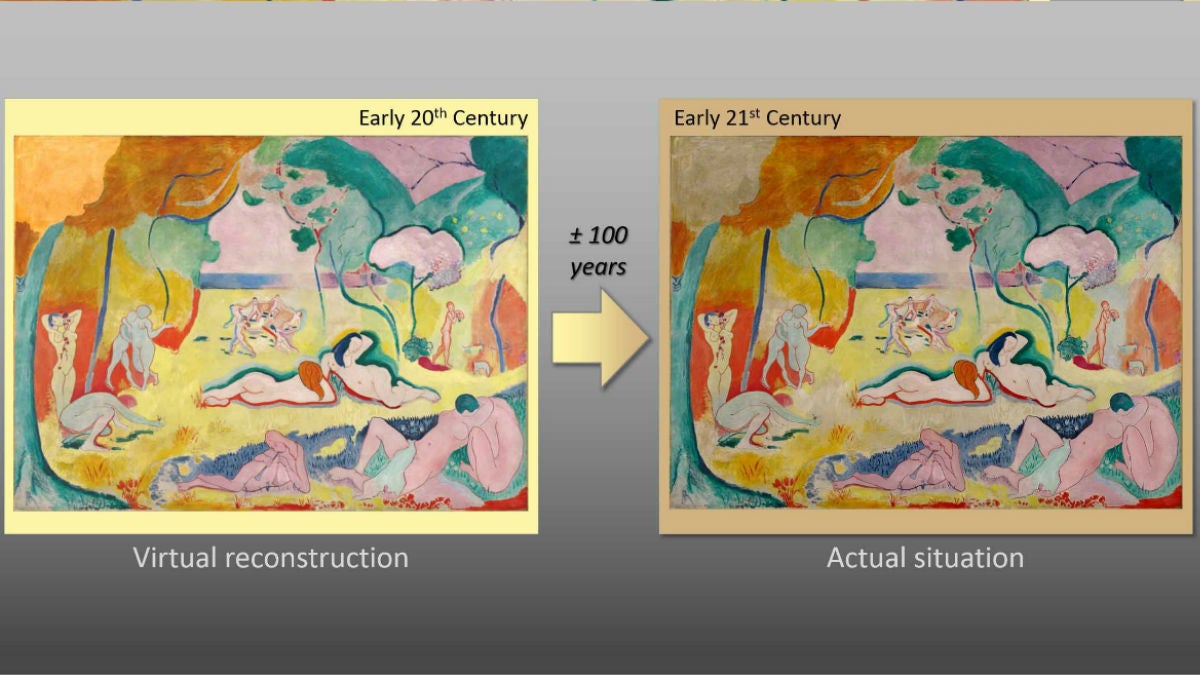Fading art: ‘At-risk’ paintings need to be preserved

(Images illustrate a virtual reconstruction (left) and the actual condition (right) of "Le Bonheur de Vivre"/"The Joy of Life" by Henri Matisse, 1905 - 06, The Barnes Foundation, Philadelphia, US)
A Delaware scientist at Winterthur Museum leads an interational study on why a bright yellow paint favored by master artists over a century ago appears to be fading.
The 1905 Henri Matisse paintings, The Joy of Life, once featured bright yellow hues. Fast forward a century and that vibrance has faded into a dull, drab, beige color. Winterthur Museum senior scientist Jennifer Mass lead an international team to figure out what caused that drastic fading. The team’s findings were published in the June 2015 issue of the journal Applied Physics A.
“The results of this study reveal how critical it is to understand not only the chemistry of the discolored paint, but also the chemistry used to prepare the paints that were available,” Mass said.
Mass and her team discovered that the bright yellow paint is made up of the chemical compound cadmium sulphide. When exposed to light, that yellow compound turns into a colorless cadmium sulphate. Because this cadmium yellow color was a favorite of Impressionist, post-Impressionist, and early modernist masters like Van Gogh, Matisse and others, there is concern for the risk of color loss posed to many masterpieces.
“The understanding of their degradation gives us a road map to guide us in the preservation of these works,” Mass said.
In their report, Mass and her team recommend developing a protocol to identify the most at-risk works. That identification work could be done even before degradation becomes visible to the naked eye. “Such [at-risk] works can be placed in the proper display environments that will prevent their degradation from worsening,” Mass said.
WHYY is your source for fact-based, in-depth journalism and information. As a nonprofit organization, we rely on financial support from readers like you. Please give today.





